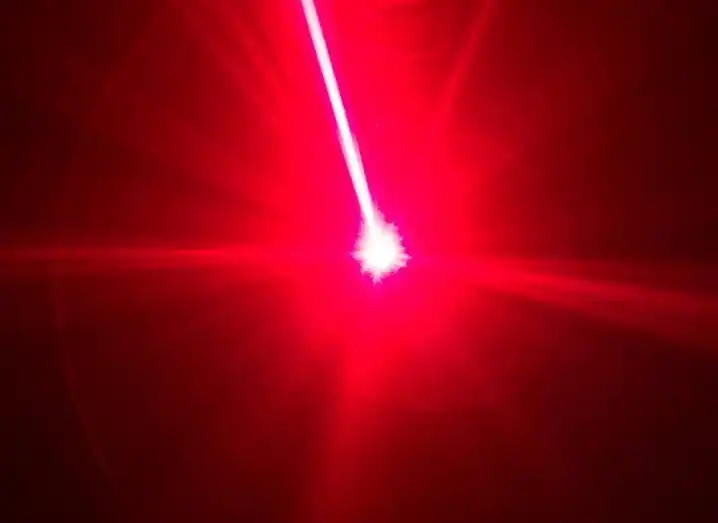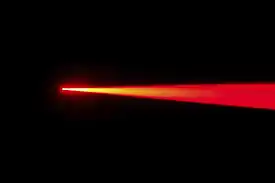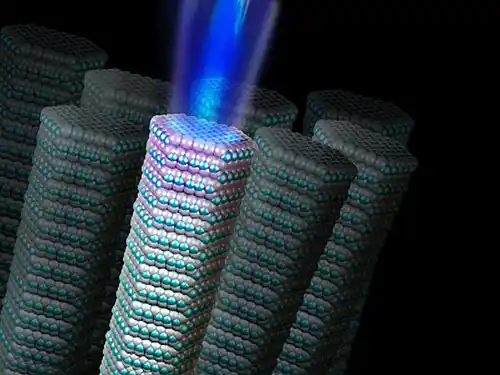افشین رشید
اُستادیار ؛ عضو هیات علمی دانشگاه آزاد اسلامی واحد علوم و تحقیقات تهران
601 یادداشت منتشر شدهNano Gas Laser ( including Carbon Dioxide, Carbon Monoxide, Helium-Neon, Helium-Cadmium, Argon, Gripton, Nitrogen Molecules, Excimer, Copper Vapor, and Gold Vapor Nanolasers )

Note: In gas nanolasers, gas flows inside the resonator. As the gas flows, it passes through two electrodes, one positively charged and the other negatively charged. The electrons flowing between the electrodes pump electrons from the flowing gas atoms to higher energy levels. Various gases can be used as the active medium in nanolasers. Gas nanolasers include carbon dioxide, carbon monoxide, helium-neon, helium-cadmium, argon, gripton, nitrogen molecules, excimer, copper vapor, and gold vapor. Examples of these nanolasers are:
A gas nanolaser is a device that emits a light wave in the form of very narrow parallel beams of a specific wavelength. Gas nanolasers use the impact of electrons to produce excited ions, which are the active devices of the nanolaser. The main part of ion nanolasers is a plasma tube. The current flow in the tube can be more than 10 nanometers. Gas nanolasers all share a common pump source, and the gas species are excited either directly, by collision with electrons, or indirectly, by collision with other gases. Gas nanolasers cover a large part of the optical spectrum from the ultraviolet to the infrared. However, the spectrum is not covered continuously. Gas nanolasers emit very narrow spectral lines. The most common gas nanolasers (from UV to far ultraviolet) are

Among the different types of gas nanolasers, carbon nanolasers, having the highest average power among gas lasers, are widely used in various applications due to their high efficiency.

The group (gas nanolasers) are lasers that, at the nanoscale , can be rapidly modulated, and together with their small footprint , make them ideal candidates for on-chip optical computing . The intense optical fields of such lasers also enable the enhancement effect in nonlinear optics or surface-enhanced Raman scattering , thus paving the way for integrated nanophotonic circuits . In general, nanolaser enhancement or amplification is the process in which a medium transfers part of its energy to the emitted electromagnetic radiation , resulting in an increase in optical power. This is the basic principle of all lasers . Quantitatively, enhancement is a measure of the ability of a laser medium to increase optical power.
Conclusion:
In gas nanolasers, gas flows inside a resonator. As the gas flows, it passes through two electrodes, one positively charged and the other negatively charged. Electrons flowing between the electrodes pump electrons from the flowing gas atoms to higher energy levels. Various gases can be used as the active medium in nanolasers. Gas nanolasers include carbon dioxide, carbon monoxide, helium-neon, helium-cadmium, argon, gripton, nitrogen molecules, excimer, copper vapor, and gold vapor. Examples of these nanolasers are:
Nano-Biosensors, Such as The Senses of Smell and Taste, Which Are Used to identify Different Smells and Tastes
Review (Link Between Nanoelectronics and Nanoplasmonics) and Many Advantages Such as Ease of Production, Possibility of industrialization, Ability to Control The Dimensions of Raw Materials of Nanochips and Nanotransistors